Without proper urban facilities, quality life is unachievable
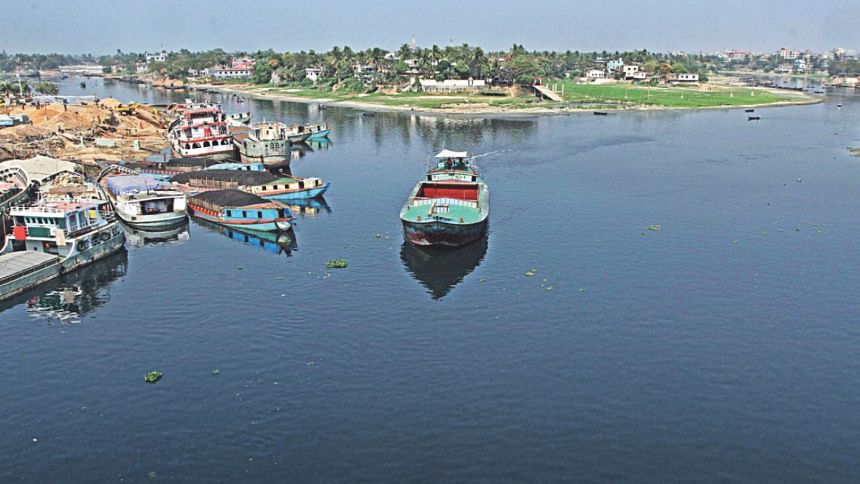
The word “city” comes from the Latin root “civis/civitas”, meaning citizen/citizenship. The expressions “civil/civic/civilisation” owe their pedigree to this Latin origin. Eventually, it came to correspond with the French “urbs”, meaning city in a more physical sense. The reason of tracing this etymology is to say that a city as a large town must be civil, have basic civic facilities and amenities for its citizens so that they can live a quality life.
From this perspective, can we argue for Dhaka city as a “civic/civil” space? Only the readers may judge this, but the purpose of this writing is to lay bare some facts about the basic facilities of Dhaka city. In an earlier piece published in this daily, I briefly touched upon the provisions of open space, roads and footpaths, air quality and noise pollution, housing and state of ponds/canals, etc. This piece will focus on provisions of water, drainage system, electricity, toilet facilities, etc.
First, let us look at the provision of clean water supply in Dhaka city. It can be seen from the perspectives of demand/supply, its quality, access to citizens and the pricing of water. In recent years, water supply from WASA has increased to almost 2.2 billion litres a day (BLD), against a demand of almost 2.5 BLD. Against the WASA-projected demand of 150l/d/person, about half of Dhaka residents living in low-income areas suffer from scarcity of water despite piped connections. The quality of water is not up to the mark, often supplying unusable, smelly water. So, most of the pipe-connected households either drink boiled water or machine-purified water. In terms of access, there is again huge inequity depending on the area. More than a quarter of Dhaka citizens live in about 4,000 informal settlements/slums where residents do not have a proper piped supply of water.
However, over 80 percent of Dhaka's water supply comes from groundwater, and this is in a city surrounded by four rivers. The sustainability of groundwater is seriously challenged because of an imbalance between extraction and rechargeability. The result is gradual subsidence of land, which is reported to be over 20 metres during the last two decades. This has great implications for other natural hazards like earthquakes. With the surrounding river systems rendered extremely polluted, the WASA plans to divert water from less polluted rivers from up to 45km away.
Now let's look at pricing of water. Dhaka WASA claims (as one of its achievements) to provide the cheapest water in the world, pricing one cubic metre/1000 litres of water only at around Tk 9 (USD 0.11). But at what cost to the WASA itself? How much of the investment or operating costs are recovered? What about the unaccounted-for water, which still stands at about 30 percent of total supply? For households with sewer connections the tariff is around Tk 14 (USD 0.15) per cubic metre. Unmetered residential water connections were billed at Tk 128 (USD 1.72) per month.
Dhaka WASA claims to have made a number of achievements including significant increase in water production, improved service quality, increased revenue, reduction of non-revenue water, and provision of water supply at low cost. But it faces a number of challenges, such as increasing billing and collection efficiency, reduction of operating expenses, rehabilitation of water distribution pipelines, full coverage of metering of distributed water and full implementation of on-line billing system. Finally, one serious challenge is to reduce dependency on groundwater.
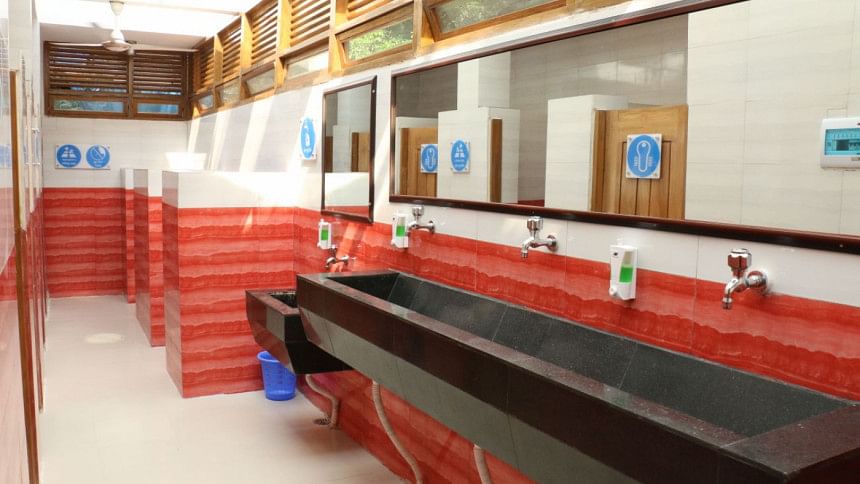
Drainage system in Dhaka is extremely precarious. Both the natural and built drainage systems are proving inadequate for managing natural flooding or rain-induced overflow. Because of increasing but totally unplanned urbanisation, illegal occupation and encroachment into khals, wetlands and water bodies, which served as retention areas, a little flooding causes an overflow into the city areas. About 80 percent of the city area is drained by these channels to the surrounding rivers. But closing or filling of many such channels including the Dholaikhal has far-reaching implications on the natural drainage system of Dhaka city. Even after the enactment of the Water Body Conservation Act 2000, the city has lost many of its wetlands.
The sewerage system of Dhaka city covers only one-third of the total urban area. Dhaka WASA utilises the existing canals and sewerage pipes to collect the waste water from different areas, carry the effluent to dispose most of it into surrounding river systems, lakes and water bodies without any treatment. Many canals are cut off and transformed into lakes, such as Dhanmondi, Gulshan, Banani or Baridhara lakes. Against the 40 percent requirement, the Detailed Area Plan 2007 recommends 21 percent of Dhaka's land as water bodies where no development would be permitted. But the DAP was never implemented. Still filling of water bodies goes on unabated by the powerful, politically-connected vested quarters, where the government proves itself powerless.
The whole city is so concretised that rainwater cannot seep into the groundwater system, causing flooding even with just an hour of torrential rain. This causes heavy economic and social costs. Inadequate drainage channels and their ineffective management mainly cause these floods. The result is waterlogging for hours, creating adverse social, physical, economic as well as environmental impacts.
Now let's look at toilet facilities. Let me begin with a cultural shock that my little daughter experienced back in 1998. After spending 7 years of her life in the US, she was shocked to see a man urinating openly by the side of Manik Mia Avenue. As if thunderstruck she put her face down on my lap pointing with her finger towards something I could not figure out first. I later realised what she was pointing at. As a little girl, she was never exposed to such a horrible sight. But this still happens so frequently that a few years ago, one western journalist called Dhaka a “city of toilets.”
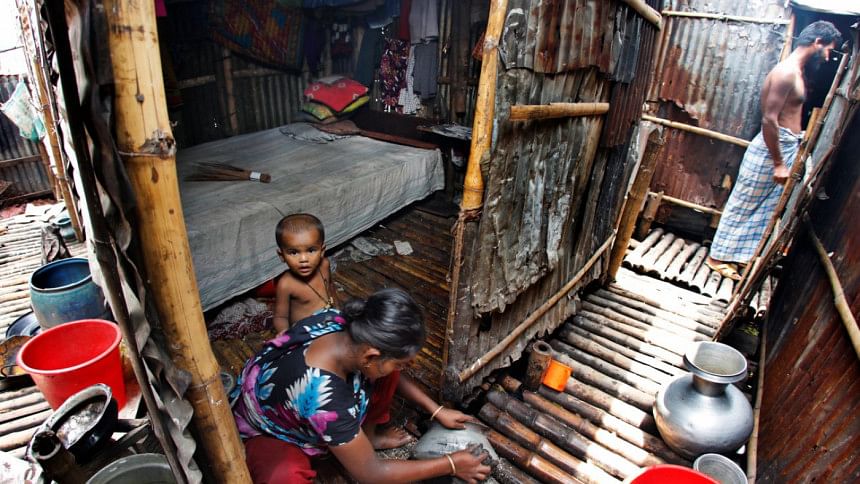
Public toilets are one basic need for travellers and shoppers. On average, there is one toilet for more than two lakh citizens, which is totally inadequate. And most of these facilities do not have cleaning service, or even regular water supply. Women particularly suffer from a lack of toilets in Dhaka city. They are even afraid of drinking adequate water before leaving home or while out in the city. This abstinence from drinking water and being unable to relieve oneself cause urinary tract infections. Whatever limited number of toilets there are, there are no separate facilities for women. Research has shown that more than 90 percent of public toilets run by the Dhaka City Corporation are extremely dirty and unhygienic, rendering them totally unusable by most citizens.
However, things have gotten a lot better in the last few years. Both the city corporations—Dhaka South and Dhaka North—have built 26 modern public toilets in partnership with WaterAid and H&M Foundation. The two city corporations have plans to build 200 more toilets by 2021. Instead of the earlier leasing system to some politically connected persons/companies, these modern toilets, with separate facilities for male and female users and equipped with CCTV, are managed by professional cleaning companies. Even committees comprising of stakeholders from government agencies, NGOs and local civil society representatives oversee the management of the facilities. A user has to pay Tk 5 to Tk 10 depending on the location and type of use. The money received from toilet users is deposited in a bank account opened in the name of the toilet. This money is being utilised for paying staff salary, utility bills and for repair work with the approval of the Finance Committee of the toilet management.
Even an app named “Dhaka Public Toilet” was devised by Preneur Lab, with all kinds of information available on about 2,000 toilet facilities. The app even won a World Summit Award this year. It tells the locations of toilets in your vicinity. This app covers all types of toilets, such as purely public ones for use by all citizens, toilets in shopping malls for use by shoppers during work hours, and toilets which are of restricted use, in offices, company buildings, stadiums, etc.
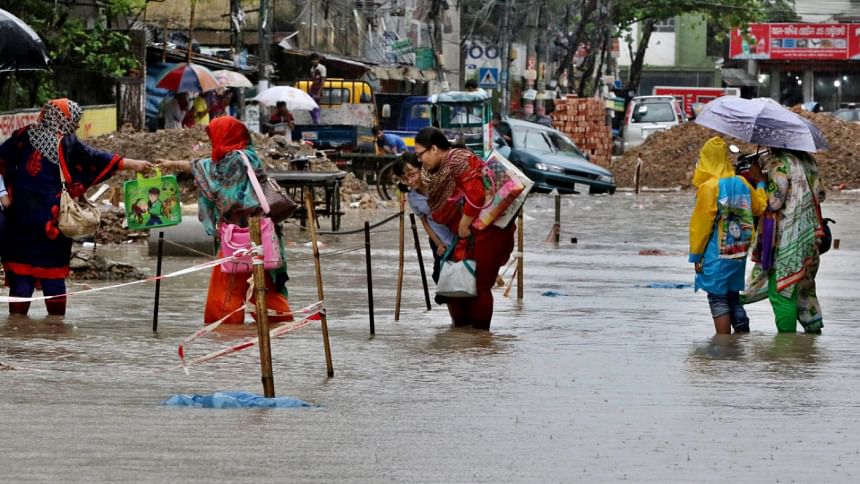
When it comes to electricity supply, city dwellers enjoy better standards than the rest of the country. Overall, more than 90 percent of urban dwellers enjoy electricity, against a country-wide average of 70 percent. The city of Dhaka inhabited by less than 10 percent of the country's population consumes about half of total electricity generated in the country, the largest share of which is claimed by its domestic sector (according to DPDC). The high-density building blocks without the provision of open space, water bodies and greenery are deprived of natural ventilation, natural airflow and sunlight and suffer from the heat island effect resulting in higher dependency on artificial lighting and air conditioning. Obviously, land zoning and land use planning with well-designed building codes for residential areas in Dhaka city should guide the provision of these elements. Also education, awareness-raising and incentives for behavioural change to use efficient technology are vital to improve energy efficiency. Such improvements have huge potential for energy conservation.
The brief discussion above shows that basic urban facilities available in Dhaka city are in no way up to the mark. Other amenities like greenery, open space and water bodies/waterways are in serious deficit for nurturing healthy minds of citizens. This is the reason why Dhaka city does not go up in the yearly global survey of liveable cities. In a city with the highest density of population in the world, where over half a million people move each year in search of livelihood opportunities, it is extremely difficult to live a quality life with a minimum level of facilities and amenities. Conditions of water supply and the electricity sector have improved than before, but the challenges of efficiency and conservation continue to persist. For example, water pricing can have a spatially differential approach, where rich neighbourhoods can pay a higher price, in order to subsidise the low-income communities. In a similar manner, incentives/disincentives can be applied to effect behavioural changes in electricity consumption. Also, the public toilet system can be built and managed on a public-private partnership basis. However, the ultimate solution of the mess in different areas of Dhaka city lies in a policy shift away from the Dhaka-centric life.
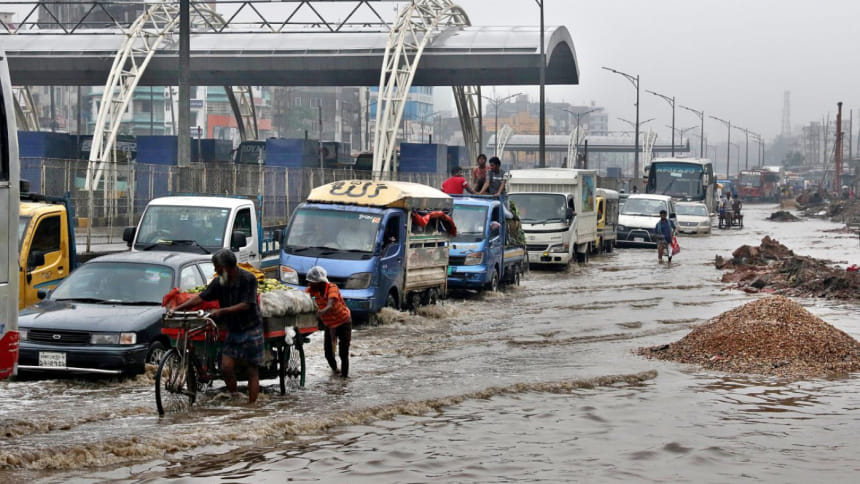
Sustainable Development Goal 11 is to “make cities and human settlements inclusive, safe, resilient and sustainable.” This requires urbanisation in a planned manner. A city like Dhaka facing so much biotic pressure with extremely limited space and other infrastructures could have been managed better by ensuring transparency and accountability of the governance system. This is where we have some serious lacking. So many departments and agencies in the city do not work in coordination with each other. Naturally, there is a huge wastage of resources and a lot of inefficiency. With full autonomy of the two city corporations and by establishing a culture of stakeholder-inclusive open dialogues, the governance system can be improved a lot, which can compensate for inadequacy of resources to an extent. The government this time sounds more determined about establishing a better governance process. Let's hope for the better.
Mizan R Khan is Professor of Environmental Management, North South University.

 For all latest news, follow The Daily Star's Google News channel.
For all latest news, follow The Daily Star's Google News channel. 



Comments